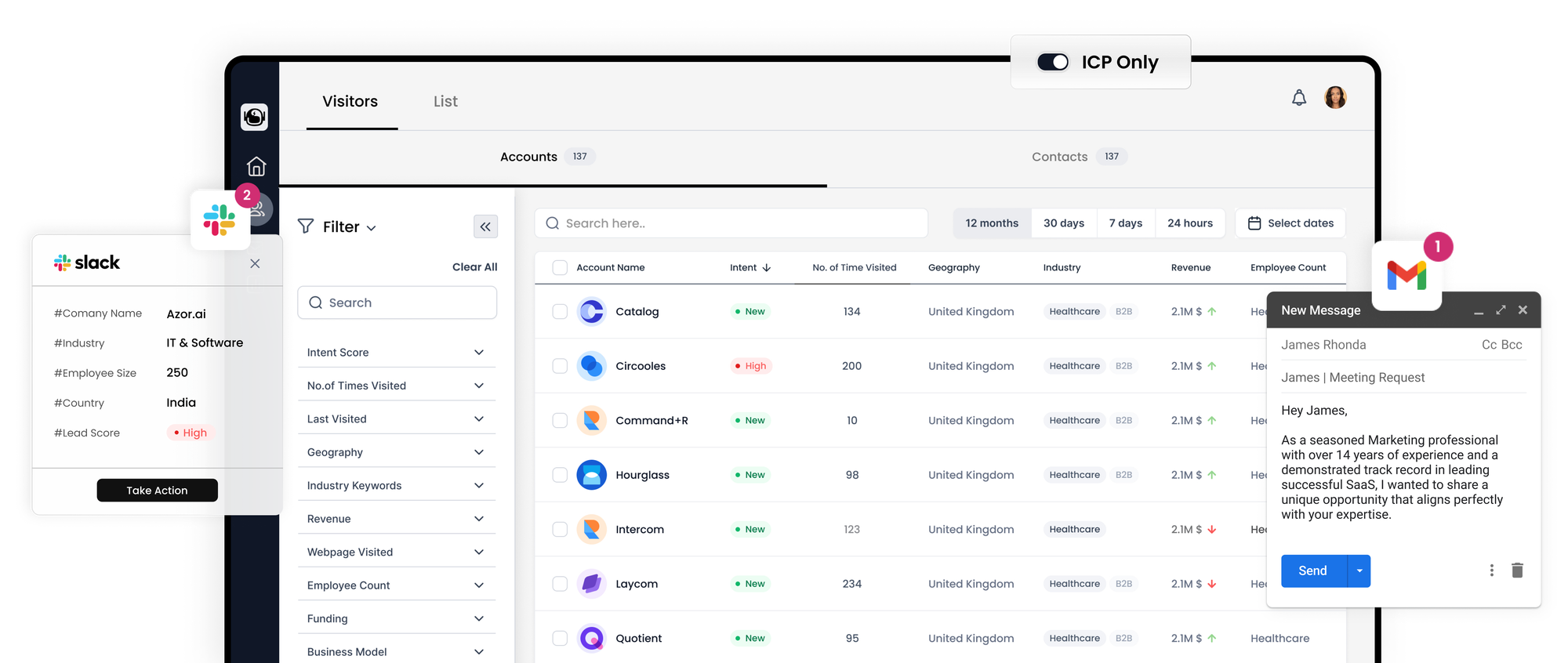Demand Creation vs Lead Harvesting in B2B Strategies

In the B2B marketing sphere, the interplay between demand creation and lead harvesting is akin to the interdependence of pedals and tires in cycling. Each component is vital for propulsion, yet they serve distinct functions.
Despite their overlapping goals, demand generation and lead generation are not interchangeable concepts. Unfortunately, some industry commentators mistakenly use these terms synonymously, which can lead to inefficiencies. While lead generation is indeed nested within the broader scope of demand generation, it is a specialized segment that commands its own set of skills and methodologies.
Blurring the lines between demand generation and lead generation can result in overlooked opportunities and an inflated cost per lead. By distinctly demarcating the two within your B2B marketing framework, you can enhance lead acquisition that aligns with sales expectations and improve the conversion to revenue ratios, all while managing to lower the cost per lead.

The Stark Contrast Between Demand and Lead Generation
The primary distinction between demand generation and lead generation lies in their objectives. Demand generation is about sparking interest in your offerings, essentially cultivating demand. It encompasses the entire journey of a prospect from the moment they recognize a need that your product can fulfill, through building trust in your brand, to a point where they show genuine interest in your solutions.
This could involve highlighting your product's unique features, disseminating expertise-laden content, sharing valuable resources, or exhibiting your brand's ethos through influencer advocacy.
Conversely, lead generation is about capitalizing on this cultivated interest by converting it into actionable prospects — names and contact details that sales teams can pursue.
The most evident differentiation between a demand generation campaign and a lead generation campaign is whether or not the initiative solicits contact information. If your campaign gates content behind a form and targets a specific audience for their details, it falls under lead generation. The primary goal here is not just content engagement but gathering relevant leads by incentivizing audience members to share their contact information.
Alternatively, if you disseminate content without a gating mechanism, aiming to reach a broad audience to engage with your message, learn about your brand, and consider your expertise, you are engaging in demand generation. This approach seeks to minimize any friction that could impede audience engagement.
Overlooked Subtleties in Demand and Lead Generation Dynamics
While both demand and lead generation utilize similar tactics such as content engagement and precise targeting, they apply these tools towards different ends.
When targeting demand generation, the focus is on identifying individuals who require an increase in brand and product awareness and then engaging this audience in a context conducive to interaction. LinkedIn profile data, for example, is instrumental in pinpointing prospects suitable for demand generation campaigns.
For lead generation, targeting pivots towards enticing individuals who show signs of readiness to provide their contact details, transitioning them from mere interest to actionable leads. This strategic targeting is essential for reducing the cost per lead and is more effective when preceded by focused demand generation efforts.
In sum, a robust B2B marketing approach demands a nuanced balance between broad-reaching demand creation efforts and the focused, conversion-centric strategies of lead generation. By adeptly guiding prospects from initial brand awareness to decisive engagement, marketers can ensure a consistent influx of quality leads primed for conversion.
Leveraging LinkedIn's Matched Audiences for Enhanced Demand Generation
Harnessing the power of LinkedIn profile data is merely the initial step. LinkedIn’s Matched Audience capabilities can significantly augment your demand generation efforts. Here are several approaches to strategically leverage these tools for targeting pivotal demand generation audiences and engaging leads primed for conversion:
Strategic Website Retargeting
LinkedIn Matched Audiences offers a website retargeting feature that segments your site visitors based on their page views, enabling precise targeting within LinkedIn. This technique allows you to customize demand generation campaigns tailored to individuals engaged with specific content, such as thought leadership articles, by connecting your solutions to the issues they indicate interest in.
Targeting Key Decision-Makers
Account-based marketing (ABM) hones in on businesses more inclined to make a purchase, thereby potentially adding more value to your company. With LinkedIn Matched Audiences, you can upload and target lists of companies identified through ABM, ensuring your efforts to raise awareness are focused on the most promising potential leads.
Intelligent Email Matching
For ongoing demand generation campaigns, it's not practical to target individuals who are already familiar with your business and may already be classified as leads. By incorporating email matching, you can refine your targeting to exclude individuals already present in your CRM, thus optimizing your investment in demand generation. Due to the high accuracy of LinkedIn's email information, this method is particularly effective for fine-tuning your audience segments.
Optimizing Lead Generation
Although lead generation and demand generation share many targeting techniques, their applications differ. Lead generation focuses on identifying prospects ready to proceed further in the buying process. By aiming at individuals more likely to become leads, you can effectively lower your Cost per Lead (CPL), especially if your demand generation has been targeted effectively.
Streamlining Lead Generation Forms
B2B marketers often grapple with the balance between engagement and capturing contact details. LinkedIn Lead Gen Forms address this challenge by providing pre-populated, mobile-optimized forms that integrate seamlessly with the platform's app, thereby simplifying the process for users to engage with your content and leave their information.
By incorporating Lead Gen Forms into your LinkedIn campaigns, marketers can significantly boost lead conversion rates, surpassing CPL benchmarks and enhancing lead quality. Ultimately, the goal of lead generation is not just to accumulate more leads but to secure higher-quality leads that sales teams will accept and that will lead to tangible revenue, thereby validating the return on investment in your lead generation efforts. Such objectives are more attainable when targeting is finely tuned to individuals who have a clear understanding of your business and are at an advanced stage of their decision-making process.
Utilizing LinkedIn's Matched Audiences for Strategic Lead Generation
LinkedIn's Matched Audiences tool is essential for creating detailed segments to target with lead generation campaigns. Here are five audience categories that can be targeted using this feature, each with a strategic approach:
Retargeting Based on Website Engagement
By leveraging website retargeting, you can identify and target LinkedIn users who have visited specific product pages, indicating their interest in your offerings. This targeted approach is key for efficiently reaching those who are most likely to engage further, directly impacting your cost-effectiveness and lead generation success.
Capturing Shared Contacts Not Yet Qualified as Leads
For individuals who have interacted with your business but haven't converted into qualified leads, uploading email lists via LinkedIn Matched Audiences can be an effective strategy. The platform's high accuracy in email matching allows you to engage with these users more effectively, potentially leading to higher conversion rates.
Sequencing Content for ABM
By uploading a list of accounts targeted through Account-Based Marketing (ABM), you can strategically sequence content on LinkedIn, transitioning from demand generation to lead generation. This ensures a more cohesive approach that nurtures the prospect through the buying journey.
Cross-Selling to Current Customers
Your existing customer base is a goldmine for potential leads, especially when launching new products or services. Through accurate email matching and segment uploads from your CRM, you can leverage existing relationships to facilitate cross-selling, leading to a higher probability of conversion.
Excluding Existing Leads to Maximize Budget
To enhance the cost-efficiency of your campaigns, utilize email matching to exclude existing leads from your targeting. This ensures your budget is allocated towards acquiring new prospects, ultimately lowering your overall cost per lead (CPL).
Content Strategies for Demand and Lead Generation
The type of content you create should reflect the unique goals of demand and lead generation:
Lead Generation Content
Craft content that provides significant value to prospects, justifying their decision to share contact information. It should cater to individuals who acknowledge their buyer status and express interest in your offerings. Aim for in-depth, actionable content that guides them further down the sales funnel.
Demand Generation Content
Focus on capturing attention with thought-leadership content that addresses current audience priorities. Employ compelling visuals, concise messaging, and engaging formats like video to stand out. Don't shy away from strong opinions or humor to resonate with your audience.
Remember, versatile content assets like in-depth research or eBooks can serve dual purposes. They can establish authority and also entice prospects to exchange their contact details. However, always adapt the presentation and format to suit the specific objectives of demand and lead generation.
Optimizing Campaigns for Demand Gen and Lead Gen
Gaining insight into lead quality and conversion paths is crucial for optimizing your campaigns. Tools like LinkedIn Lead Gen Forms and Conversion Tracking provide detailed data on cost per lead and the efficacy of your advertising. Use this information to refine your strategies, conduct A/B testing, and focus on the most effective tactics, ensuring continuous improvement in your ROI.
